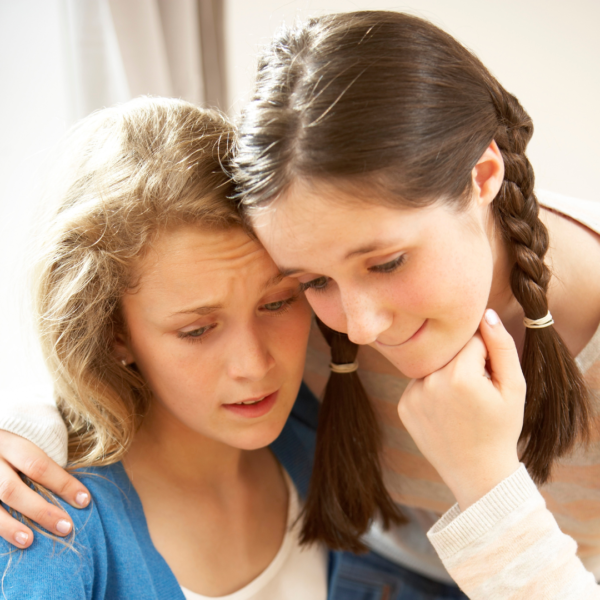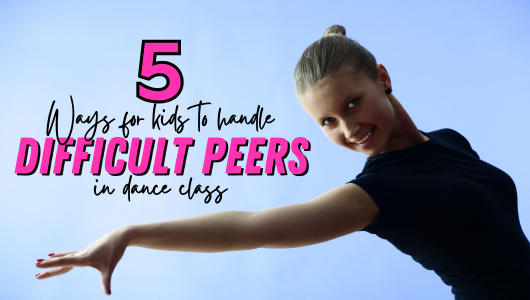Dance class is a place for kids to express themselves, develop skills, and make friends. However, sometimes difficult peers can disrupt the positive atmosphere, making it hard to stay focused and have fun. It’s normal to encounter different personalities in any group setting, and learning how to handle challenging situations can be an important life skill.
Here are five ways children can manage difficult peers in dance class while still keeping the environment friendly and enjoyable.

Stay Calm and Focused: It can be frustrating when another dancer is being disruptive, teasing, or causing distractions, but it’s important to stay calm. Reacting with frustration or anger can escalate the situation, making it harder to resolve. Encourage kids to focus on their own dancing and use the moment to practice mindfulness—taking deep breaths or mentally going over their steps. Staying composed not only helps to ignore the distractions but also sets a good example for others.

Politely Set Boundaries: If a peer is being pushy, rude, or trying to boss others around, it’s okay for kids to set boundaries. Teaching kids how to express themselves assertively but respectfully can help them handle the situation. They could say something like, “I don’t like it when you push me,” or “Let’s take turns.” This lets the difficult peer know what behavior is not acceptable, while also reinforcing the kid’s own personal boundaries. Being clear but kind helps avoid conflict and often earns the respect of others.

Avoid Engaging in Negative Behavior: Sometimes, kids can get drawn into negative behavior when others act out. If a difficult peer is trying to provoke them or others, it’s best to avoid engaging in arguments, teasing back, or copying disruptive behavior. Instead, remind children to keep their attention on the dance instructor and the routine. When they don’t react to the difficult child’s behavior, it often loses its power. Moreover, staying positive and committed to their dance helps create an encouraging atmosphere for everyone.

Seek Help from the Dance Instructor: If a peer’s behavior becomes a recurring issue, kids should feel comfortable talking to the dance instructor. It’s the teacher’s responsibility to maintain a safe and supportive environment for all students. If a child feels uncomfortable or unsafe, they should be encouraged to speak up. The dance instructor can step in and address the problem, making sure that everyone is treated fairly and respectfully.

Practice Empathy and Understanding: Sometimes, difficult behavior comes from a place of frustration or insecurity. Encouraging kids to practice empathy can help them handle tricky situations more effectively. For instance, if a peer is acting out because they are struggling with a dance move, offering to help or just being kind can make a big difference. This doesn’t mean tolerating bad behavior, but understanding that there could be reasons behind it might make it easier to respond compassionately.
Handling difficult peers at dance class can be challenging, but with the right tools, kids can manage the situation while still enjoying their time. Ultimately, learning to navigate these interactions builds not just dance skills, but life skills too!

